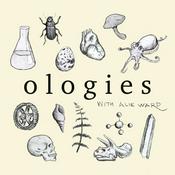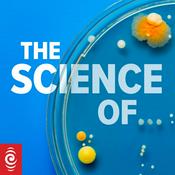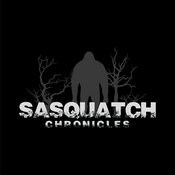79 episodes

20. Using Autonomous Tractors on the Farm with Matt Krueger
18/12/2025 | 55 mins.
We talk with Matt Krueger about his field-level view of autonomous tillage with a 9R series John Deere tractor, from kit installation to dust-driven safety stops, and how better boundaries and AutoPath boost both uptime and data quality. Matt's story centers on labor flexibility, real costs, and where autonomy should expand next.In this special hour-long episode we talk:• autonomy kit details, JDLink Boost connectivity, dual receivers• autonomy-grade boundaries and safe offsets near obstacles• dust sensitivity, camera logic, alerts and overrides• AutoPath benefits for cleaner headlands and data integrity• remote control of depth, pressure and implement settings• ROI framed as uptime and labor flexibility, not replacement• likely next targets for autonomy: sprayers and air seeders• subscription pricing models and reliability trade-offs• NDVI plus as applied maps to trace application misses• skills and fallbacks when GPS degrades or sensors failWith GK Technology, we have a map, and an app, for that!https://gktechinc.com/

19.5 Map The Acidity, Save The Harvest
10/12/2025 | 11 mins.
We dig into why low (acidic) soil pH unlocks aluminum toxicity, how that halts root growth, and which crops suffer first. Then we lay out a practical plan to find acidic patches with smarter sampling, NDVI, and grid-the-zone strategies, and point to lime and buffer pH for the fix.In this episode, we discuss...• soil pH as chemical control and pH level of 7 is neutral• aluminum toxicity risk to crops increases below 6.5 pH • wheat relatively tolerant, legumes struggle with nodulation • stunted roots and thin stands on slopes and sandier spots • acidic areas are patchy and do not always follow productivity maps • importance of using intensive grids and how 0–3 inch sampling in no-till helps detect acidicity issues• soil testing: pair pH with buffer pH to set lime rates • target NDVI-low areas and grid inside zones • variable-rate lime as the remediation path Gridding the Zone with Ag Genesis Part 1: https://www.buzzsprout.com/2297340/episodes/16692855Gridding the Zone with Ag Gensis Part 2:https://www.buzzsprout.com/2297340/episodes/16692855Tune in next time for a Tiny Byte of knowledge from GK Technology, where we have a map and an app for that.https://gktechinc.com/

19. Preston Sundeen Pt. 2 - Teaching Precision Ag That Works Today
04/12/2025 | 30 mins.
Welcome back to the second part of our conversation with Preston Sundeen to explore how a two-year ag program prepares students for precision agriculture careers by building real-world skills across hardware, software, GIS, and agronomy. Sundeen's focus is practical confidence: clean data, sound troubleshooting, critical thinking, and learning to ask better questions. We also talk about...• defining precision ag as practical, cross-disciplinary work • balancing agronomy, GIS, hardware and software fundamentals • building file discipline, projections and boundary workflows • sourcing NAIP, PLSS, and satellite imagery effectively • controller setup, CAN bus basics and diagnostics • using simulators to teach certain types of controllers • as-applied data, JD Operation Center, SMS, and FieldView exposure • teaching troubleshooting: manuals, credible videos and tests • digital literacy and AI as time-saving tools • measuring success by momentum, confidence and community impact We had an excellent conversation with Preston and we know you'll enjoy it too.Part 1 of our conversation: https://www.buzzsprout.com/2297340/episodes/18257891https://gktechinc.com/

18.5 Is There a Way to Predict IDC Risk?
04/12/2025 | 8 mins.
We unpack why soybean leaves turn yellow in patches, thanks to soybean IDC (iron deficiency chlorosis) and how to predict IDC risk for management. We share the exact soil tests that matter, how to read the lab results, and where precision mapping saves money and yield thanks to IDC management.We also discuss...• defining iron chlorosis• why iron-rich soils still cause deficiency• limits of testing for DTPA iron alone• three key predictors: pH, EC (salts), and CCE (calcium carbonate equivalent)• why percent CCE beats a simple fizz rating• thresholds where CCE raises severe IDC risk• how residual nitrate can worsen chlorosis• grid versus zone sampling for better maps• using maps to place tolerant varieties and inputs• practical steps to keep beans greenTune in next time for a Tiny Byte of knowledge from GK Technology, where we have a map and an app for that!https://gktechinc.com/

17.5 Cracking The Code Of Salty Soils
26/11/2025 | 9 mins.
We break down what “salty soil” really means and why salinity and sodicity demand different fixes. We share how to properly diagnose a soil as saline, sodic, or saline/sodic through soil sampling and testing, to avoid turning a manageable patch into concrete.We also discuss....• defining normal, saline, sodic, saline-sodic with soil test EC and sodium results• why salinity causes drought-like stress without wrecking structure• how sodicity drives clay dispersion and pore collapse• when salts keep clays flocculated in saline-sodic soils• risks of leaching or tiling without a sodicity management plan• sampling depths: 0–6, 6–12, 12–18 inches for diagnosis• using pH as a supporting clue for sodicity• prioritizing amendment before drainage to prevent sodic blowupsMore information on management of salty soils here: https://www.ndsu.edu/agriculture/extension/publications/managing-saline-soils-north-dakotaTune in next time for a Tiny Byte of knowledge from GK Technology, where we have a map and an app for that.https://gktechinc.com/
More Science podcasts
Trending Science podcasts
About Ag Geek Speak
Listen to Ag Geek Speak, The Rest Is Science and many other podcasts from around the world with the radio.net app

Get the free radio.net app
- Stations and podcasts to bookmark
- Stream via Wi-Fi or Bluetooth
- Supports Carplay & Android Auto
- Many other app features
Get the free radio.net app
- Stations and podcasts to bookmark
- Stream via Wi-Fi or Bluetooth
- Supports Carplay & Android Auto
- Many other app features


Ag Geek Speak
download the app,
start listening.






































